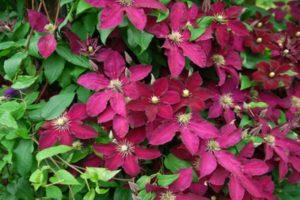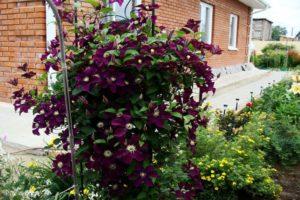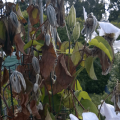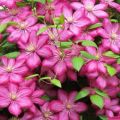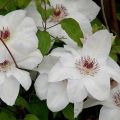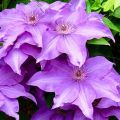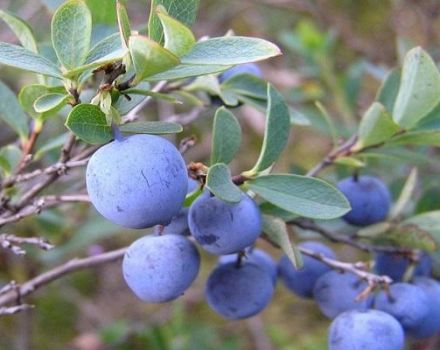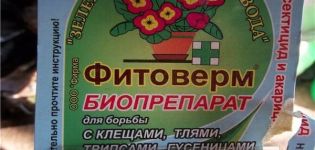Description and varieties of clematis of the Knyazhik variety, planting and care
Clematis Knyazhik is a unique element of garden decoration, which will perfectly fit into any design. This original plant is a beautiful flowering liana.
It is worth noting that Knyazhik is considered a "relative" of clematis, differing from him only in the structure of the flower and the rate of growth. The flowering of the Prince attracts the attention of others. It is used in the design of arches, hedges, or simply to create a bright spot in green compositions.
General characteristics of clematis Knyazhik
Knyazhik is an elegant perennial vine with magnificent flowers. The family to which he belongs is considered Buttercup. The natural habitat is the northern regions.
The plant has flexible, woody, highly branching stems, densely covered with carved foliage. The vine is attached to the support with long, twisting petioles. Its buds, which form singly, resemble bells in their shape. Flowers can be blue, white, pink, purple or two-tone, depending on the variety. Knyazhik's sepals are large enough, their cup contains from 4 to 8. The plant blooms in early summer.
Varieties of varieties
There are several of the most popular types of clematis Knyazhik:
| View | Description |
| Alpine | The natural habitat is the forests of Europe and the Baltic states. The flowers are in the form of large bells, on them there are 4 sepals, in which the petals are hidden. Among the shades that characterize this variety, stand out: pink, lilac, blue and purple. The rich green leaf plate has a triple shape and serrated edges. The flowering period begins at the end of May. Popular varieties of this type of Knyazhik:
|
| Large-lobed | The homeland of this species is the Far East, as well as Korea, China and Siberia. A feature of the large-petaled Knyazhik is the terry structure of the inflorescence, which gives it splendor and elegance. This species has more small petals covered with upper sepals than others. It is also more demanding in care and especially in the shelter of the bush in the winter. The following varieties of this type are widespread:
|
| Siberian | In natural conditions, it is found in the coniferous forests of Russia.The bush can grow up to 3 meters. The species is distinguished by abundant flowering. Flowers are white or yellowish in shape, bell-shaped. The flowering period falls in the middle of the summer season. It often pleases gardeners with repeated flowering in early autumn. This Knyazhik is characterized by frost resistance and a delicate, sweet aroma emanating from flowers. |
| Korean | The least popular species, rarely found in Russia. It features bright yellow, red or purple flowers. The height is from 2 to 3 meters. |

Advantages and disadvantages of Clematis Knyazhik
There are practically no disadvantages of this culture. Among the advantages of the Knyazhik, in the first place is, of course, his decorativeness and unpretentiousness. This plant pleases with its appearance even during periods of absence of flowering. It perfectly survives the winter cold and is ideal for the embodiment of the most daring design ideas.
Features of planting clematis
Site selection and soil preparation
When choosing a landing site on your site, it is worth remembering that Knyazhik, although considered photophilous, feels better in partial shade. The presence of drafts and sharp gusts of wind is unacceptable. Also, it is important to think over and prepare the supports on which the vine will be attached before planting.
Knyazhik has no special requirements for the composition of the soil, however, if you follow some recommendations, the vine will grow more intensively:
- The soil should not be damp, swampy. Otherwise, the root system will rot.
- The best option would be loamy, slightly alkaline soil.
- Particular attention should be paid to good drainage.
- The soil should be light, loose, water and air permeable.
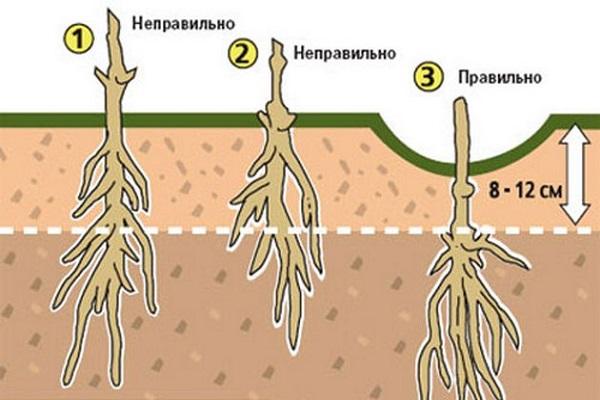
Preparation of planting material
Before planting in the ground, it is recommended to cut the Knyazhik sapling in half, in order to speed up rooting and stimulate the growth of new roots. Cut pieces of cuttings can also be used for rooting.
Planting process
It is very important to plant the Knyazhik in compliance with the basic recommendations:
- The planting hole should be of a suitable size, about 70-70-70, and located next to the future support for the plant. A distance of at least 1 meter must be left between the seedlings.
- The bottom of the pit should be covered with a drainage layer. For these purposes, gravel or broken brick mixed with sand is perfect.
- Further, it is recommended to place a layer of horse manure, which serves as an excellent fertilizer.
- After that, you need to fill the remaining volume with the prepared earthen mixture. It should contain compost, ash, superphosphate, complex mineral fertilizer. If the soil is acidic, it is recommended to add slaked lime.
- It is important to remember that the root system of Knyazhik is very fragile, so the planting process must be done very carefully. If the seedling already has damage in the root system, they need to be removed, after which it is recommended to treat the sections with activated carbon or potassium permanganate.
- After planting the seedling in the ground, you need to water the plant abundantly and loosen the soil.
- The transplant is best tolerated by seedlings that have reached the age of two.
- In order to protect a young plant from diseases, you can fill the top layer of soil around the root collar with river sand mixed with wood ash and add a weak solution of potassium permanganate when watering.
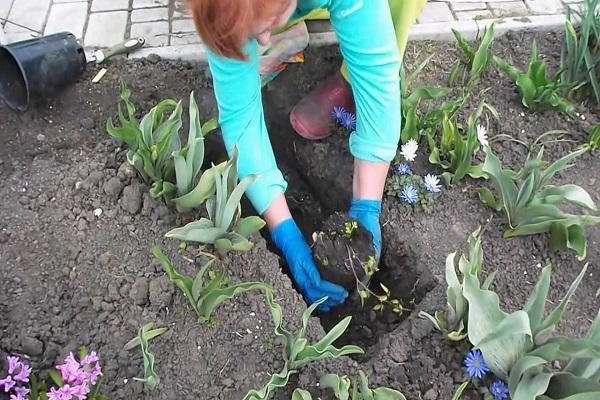
Further care
Watering and loosening
Watering rates are determined by the ambient temperature. If the summer is hot, then you need to water Knyazhik at least twice a week, especially young plants. At moderate temperatures, one watering per week is sufficient
Loosening the soil has a beneficial effect on the health of the plant's root system, so it must be done every time before the next watering.
Fertilization
It is recommended to apply organic and mineral fertilizers every two weeks, stopping feeding only for the period of active flowering.
Urea, mullein, chicken droppings or complex mineral fertilizers are excellent as top dressing.
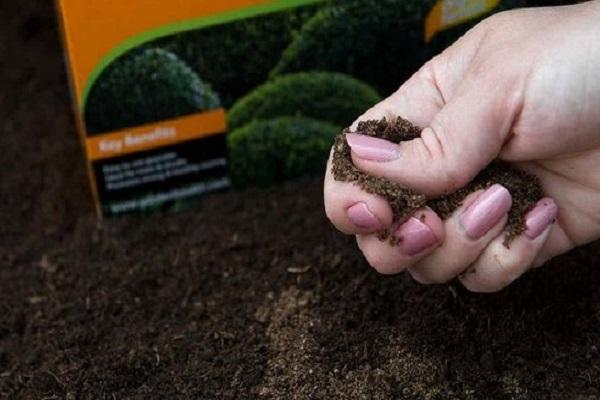
Correct pruning
You should know that already in the first year after planting, the Princes give perennial shoots that cannot be cut off. Therefore, it is important to take into account the location of the support directly near the plant when planting. Pruning is done only to remove damaged, unkempt stems.
In order for a young plant to grow stronger and quickly form a root system, it is necessary to pinch the ends of shoots that have reached 20 cm in length in time.
Shelter for the winter
Since some plant species came to us from the northern regions, Knyazhik is considered a frost-resistant plant and does not need shelter for the winter. Long shoots for the winter period are not cut off.

Major diseases and pests
It should be noted that Knyazhik is quite susceptible to the manifestation of various diseases and pests. Among the most common diseases are:
- rust - manifested by deformation of the shoots, the appearance of orange growths on the leaves or shoots. Spraying with Bordeaux mixture will help to cope with it;
- brown spot - characterized by brown spots on the leaves, after which holes appear. In order to prevent large-scale damage to the plant, it is necessary at the first signs to remove the damaged parts of the plant and treat it with copper oxychloride or copper sulfate;
- waterlogging of the soil often leads to fungal infections of the root system. Only transplanting into another soil with the removal of damaged parts of the root system will help to save a sick plant.
Among the pests that infect this vine, snails and slugs are most often found. In this case, special traps located around the bush can help. In winter, the root system and stems of Knyazhik can be damaged by mice, so care must also be taken to restrict their access to the plant.
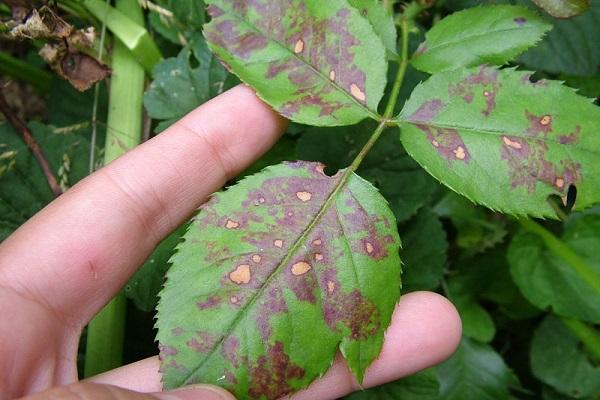
Reproduction methods
There are several ways to breed Knyazhik:
- cuttings;
- layering;
- division of rhizomes.
An effective way is to plant a new plant by layering. For this, young stems are bent down and covered with earth in the spring. And exactly one year later, they can be separated from the mother bush and transplanted to a permanent place.
Use of Knyazhik in landscape design
This amazing plant can decorate any area. Wrapping around the support, they are able to create magnificent compositions. This liana is often planted near gazebos, arches, in order to make them decorative. In addition, you can place the Knyazhik next to large trees, the trunks of which will serve as a natural support.
Some designers plant Knyazhik as ground cover plants.
